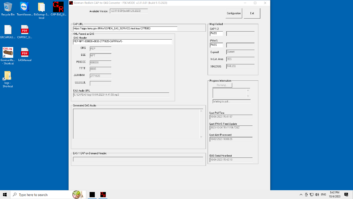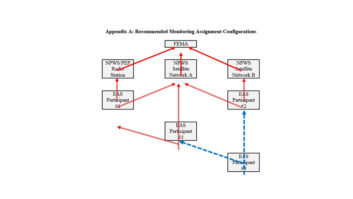EAS rules updated
May 1, 2002 12:00 PM, By Harry Martin
The FCC has made several changes to its rules governing the nation’s Emergency Alert System (EAS). Broadcast stations and cable systems are required to participate in EAS on a national basis. They must install EAS equipment that receives and transmits national alerts, and they must broadcast national alerts over their stations. They must also participate in tests of the EAS system. Stations and cable systems have the option of participating in EAS on a state or local basis, which involves broadcasting state or local alerts.
The FCC made the following changes to EAS at the request of the National Oceanic and Atmospheric Administration, the National Weather Service and the Society of Broadcast Engineers:
- New state and local event codes were added to further specify the nature of an alert. These include child abduction emergency, nuclear power plant warning, avalanche warning, earthquake warning, fire warning, hazardous materials warning, 911 telephone outage and volcano warning codes.
- From now on, new codes will adhere to a naming system in which the third letter of the code is one of four letters. This will allow consumer electronic products to check the third letter and generate a generic message corresponding to the level of the alert (i.e., warning, watch or emergency).
- New location codes have been added to cover adjacent offshore areas. Location codes specify the area of alert.
- EAS equipment manufacturers may now include a feature allowing stations to program their decoders to selectively display and log only those state and local messages that contain certain codes. This is more consistent with the voluntary nature of state and local EAS. All national EAS messages must continue to be displayed and logged.
- Existing EAS equipment need not be updated to receive and transmit new state and local event and location codes, or selectively display and log only certain state and local codes. However, all equipment manufactured after Aug. 1, 2003, must have these capabilities. In addition, stations that replace their EAS equipment after Feb. 1, 2004, must install equipment with these capabilities.
- Stations will now have 60 minutes after receipt to retransmit the required monthly test.
- In a national emergency, stations will be permitted to broadcast the President’s voice message using a higher quality audio source than the EAS decoder audio. Stations may not delay the broadcast to substitute alternative audio.
- Satellite and repeater stations that rebroadcast 100 percent of the programming of their lead station will no longer be required to install EAS equipment. Lead stations are encouraged to monitor the EAS sources of their satellite stations where these are different from their own EAS sources.
- Low-power FM stations, which are currently required to install only a decoder, will be temporarily exempted from installing EAS equipment until decoder-only units become available for purchase.
EAS rule violations are a regular source of fines issued to broadcasters. Failure to have the proper equipment or to log required tests are the most common violations.
Enforcement actions
�If you’re easily offended, please turn off your radio.� This line during a Chicago morning show did not stop the assessment of a $21,000 fine against an FM broadcaster. Despite the warning, the FCC found that extensive discussions of sexual organs and activity merited fines. The station was fined for three morning shows in which on-air personalities discussed aphrodisiacs and graphically described sexual activities.
�We’re not home, leave a message.� Broadcasting an answering machine message, without the prior consent of the machine’s owner, resulted in a $6,000 fine. The FCC’s rules prohibit the broadcast of telephone conversations without the other party’s prior consent. The FCC decided that the station that broadcast the answering machine message should have given the other party prior notice of intent to broadcast.
Martin is an attorney with Fletcher, Heald & Hildreth, PLC., Arlington, VA. E-mail[email protected].
Dateline:
No biennial ownership reports are due in 2002. However, broadcasters who purchase a new station, or obtain an initial construction permit or license for a new facility, must still file a Form 323. These forms now may be filed electronically.
On July 10 all commercial and noncommercial stations must place in their public files their quarterly issues/programs lists for the period April 1 – June 30. Such lists must contain a brief narrative describing the issues covered and the programs that provided the coverage, with information concerning the time, date, duration and title of each program.





